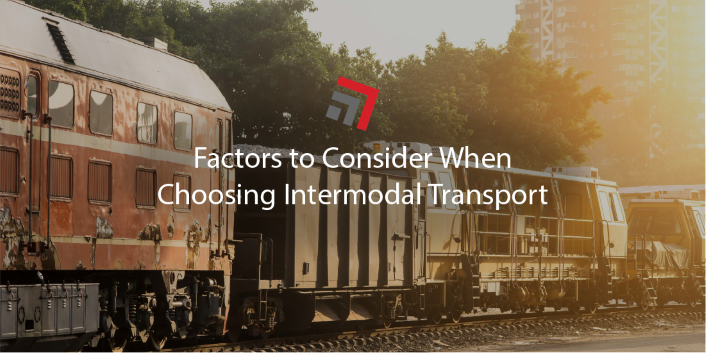Factors to Consider When Choosing Intermodal Transport
Is Intermodal Transport the best, most cost-effective means of moving goods? In general, rail costs less than truck, especially when hauling bulk commodities, such as: lumber, grain, fuel, and fertilizer over long distances. It becomes even less expensive if freight is near a rail ramp.
What to Consider When Choosing Intermodal Transport
Rail/Intermodal transport is quite dependable. Very rarely will weather conditions keep cargo from reaching its destination. You should feel confident that the goods will arrive when scheduled, which begs the question: Why would anyone choose to use any other mode of transport? However, like any other shipping method, railway transport isn’t without any drawbacks. Consider these when going this route for moving goods:
Damage to Goods
There is always a risk for damage to goods, no matter the mode of transport. Shipping by rail often poses the most liability when compared to the other options. Cornering, braking, starting, shunting, and even passing over rail switches can dole out irregular force on freight.
Limited Accessibility
It usually takes multiple modes of transport to get cargo from point A to point B, which doesn’t just impact shipping costs. It also holds sway over the length of time it takes to move goods to their destination.
Extensive Planning
Intermodal transport has lots of moving parts and requires extensive planning to ensure goods reach their destination in a timely matter. It is important to coordinate not just moving freight by rail but getting that freight to and from the rail. You could be adding unnecessary expenses to a relatively affordable means of shipping if you don’t plan accordingly.
Time in Transit
Apart from water transport, rail is often your slowest shipping option. For example, it will take two to four days to move freight by road; it will probably take at least a week by rail. But what you lose in speed and flexibility, you make up for in savings.
Before deciding whether to move goods by rail, make sure to weigh the pros and cons associated with this transport. Going rail often allows you to combine the advantages of other modes of shipping to create a solution perfectly suited for your product.
If you would like to learn more about intermodal transport, or would like to discuss shipping by rail, call, connect, or email Commerce Express. We are ready when you are!



Recent Comments